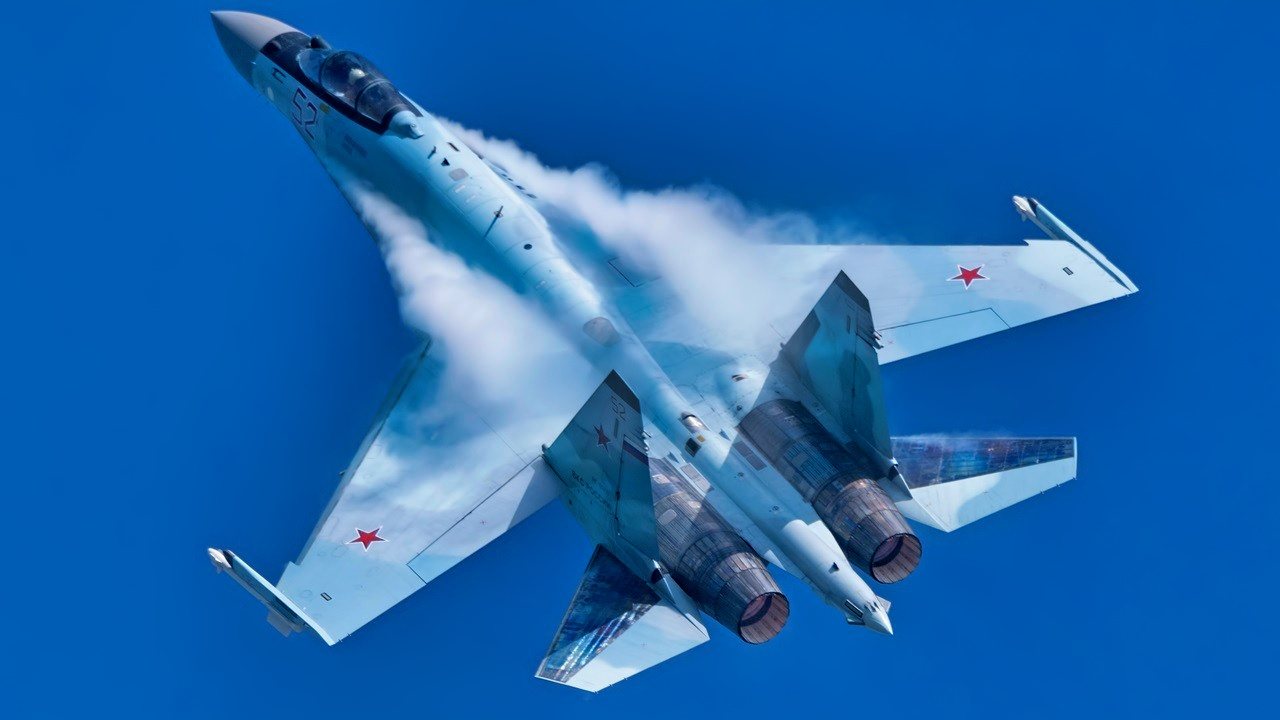Su-35: The Powerful Fighter Jet Russia Could Soon Send to Iran?
The addition of Russia’s Su-35 fighter to its aerial arsenal would undoubtedly enhance Iran’s aviation and attack capabilities in a number of clear ways.
According to Iranian state-run media outlets, Tehran has finalized arrangements to procure the Russian-made Su-35 fighter jet.
In addition to these fighters, Iran’s Air Force will allegedly receive a fleet of Mil Mi-28 attack helicopters and Yak-130 jet trainers.
This military exchange has been rumored and in the works for quite some time, indicative of the strengthening relations between Moscow and Tehran.
The two rogue partners have notably supported each other amidst Russia’s ongoing invasion of Ukraine.
For more than a year, Iran has supplied Russian forces with scores of lethal unmanned aerial vehicles (UAVs) to deploy against Ukraine.
Earlier in 2023, member of Iran’s Parliament’s National Security and Foreign Policy Commission Shahriar Heidari said that the regime was working to solidify a deal that would culminate in the exchange of military equipment with the Kremlin.
Analysts long predicted a situation like this would occur, considering Moscow still “owes” Iran for its drone shipments.
In September, images depicting Russia’s Yak-130 trainers positioned in Iran’s 8th Tactical Air Force Base near Isfahan circulated. This development was notably since these trainers can be used by Iranian pilots to prepare to fly fourth-generation fighters like the Su-35.
Introducing Russia’s Su-35 Fighter: Coming to Iran Soon?
Initially conceptualized during the Cold War, Russia’s Su-35was designed to replace its Su-27 predecessor. Manufacturer Sukhoi developed the Su-27M production version, which shared some similarities to the existing model. Both the Su-27 and Su-27M share a blended wing-body design.
However, in terms of canard position and the incorporation of an advanced weapons-control system, the latter was much more sophisticated. The Su-27M was more maneuverable than its predecessor due to the small lifting surfaces positioned ahead of its wings.
Additionally, its new weapons-control system decked out with the multi-function N011 Bars phased-array radar enabled it to locate targets below the horizon.
How does the Su-35 Flanker-E compare to newer fighter jets?
Ultimately, the fighter was redesignated as the Su-35. The North Atlantic Treaty Organization (NATO) refers to this fighter as the “Flanker E.” Moscow continues to tout the capabilities that its Su-35 provides to its Air Force. Perhaps the fighter’s greatest attribute is its speed.
The jet can travel at speeds of roughly 1,500 miles per hour, or Mach-2.5 (times the speed of sound). For reference, the American-made fifth-generation platfors the F-22 Raptor can fly at the same speed. Also important to note, America’s newest fifth-generation platform the F-35 Joint Strike Fighter is actually slower.
Specs and capabilities
The Flanker-E has a flight range of more than 2,000 miles and a service ceiling of roughly 60,000 feet.
Armament-wise, the Russian fighter can pack a punch.
As detailed by Airforce Technology, “The aircraft has 12 hardpoints for carrying external weapons and stores. Each wing has four hardpoints – one on the wingtip and three under-wing stations. There are two hardpoints on the underside of the fuselage on the centreline and one under each engine. The aircraft’s air-to-air missiles can include the Vympel R-27 (Nato designation AA-10 Alamo), the Vympel radar-guided medium-range R-77 (AA-12 Adder) and the Vympel short-range infrared-guided R-73E (AA-11 Archer).The aircraft’s air-to-surface missiles include the Molniya Kh-29 (AS-14 Kedge) tactical missiles, the Kh-31P (AS-17 Krypton) anti-radiation missiles and the long-range Kh-58UShE (AS-11 Kilter) anti-radiation missiles.The Su-35 anti-ship missiles include Kh-31A, the long-range Kh-59MK (AS-18 Kazoo), the long-range Kalibr and the NPO Mashinostroenia heavy long-range Yakhont missile.”
Why Does Iran want the Su-35?
For decades, Moscow and Tehran have maintained warm relations with each other.
As rogue allies isolated mainly from the international community due to nuclear-related infractions and the ongoing Ukraine invasion, the Kremlin and Iranian regime are turning towards each other more and more.
While this strategic alliance has been brewing for some time, the current geopolitical instability in Eastern Europe has certainly ramped up relations.
As discussed earlier, Tehran has provided Moscow with a slew of lethal UAVs to support its offensive war efforts in Kyiv. The Kremlin did not leave its ally empty handed for this deal. According to a Wall Street Journal report last year, Iran received advanced digital-surveillance technology along with other military-related components in exchange for the drones. However, an even larger prize was apparently in the works.
Iran’s Air Force is largely made up of Soviet-era relics that it acquired prior to the Islamic Revolution. In fact, Iranian pilots still fly heavily maintained F-14 Tomcats and F-4 Phantoms. The addition of Russia’s Su-35 to its aerial arsenal would undoubtedly enhance Tehran’s capabilities.

Now that Iranian proxy groups throughout the region are incessantly attacking U.S. and Israeli military assets in Syria and Iraq, the introduction of more advanced fighters to Tehran’s arsenal is concerning.
As the Kremlin and regime continue to thaw relations, additional future military-related exchanges should be expected.
About the Author
Maya Carlin is an analyst with the Center for Security Policy and a former Anna Sobol Levy Fellow at IDC Herzliya in Israel. She has by-lines in many publications, including The National Interest, Jerusalem Post, and Times of Israel. You can follow her on Twitter: @MayaCarlin.
All images are Creative Commons.


